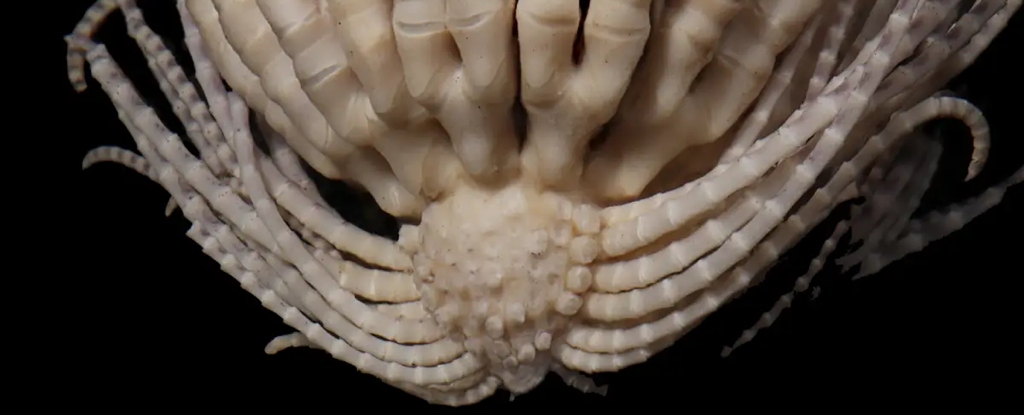Researchers trawling the ocean near Antarctica uncovered a new species that looks haunting in photos — but named it after a fruit.
The Antarctic strawberry feather star is a sea creature with 20 so-called “arms” — some bumpy, some feathery — and can altogether be up to eight inches long, Greg Rouse, a marine biology professor at the University of California, San Diego, told Insider.
Rouse, Emily McLaughlin & Nerid Wilson published their findings on the new species in Invertebrate Systematics last month.
The alien-like being does not look like a Strawberry at first. But if you zoom in on its body — a tiny nub at the apex of all those arms — it resembles the size and shape of the fruit.
The circular bumps on the star’s body are where the cirri — the smaller tentacle-like strings protruding from the base — should be, but were removed to show the attachment points, Rouse said.
He said, “We have removed a bunch of cirri to show you the parts they are attached to. That’s what looks similar to a strawberry.”
The cirri has tiny claws on the end which are used to grab onto the seafloor.
In the picture, the so-called arms of the Antarctic strawberry feather stars are the longer, more feathery parts. Rouse says that the arms are typically spread apart and assist with the creature’s mobility.
The newfound species’ formal name is Promachocrinus fragarius. It belongs under the class of Crinoidea, which includes starfish, sea urchins, sand dollars, and sea cucumbers, and is a type of feather star — hence the less formal “Antarctic feather star” name. The paper says that the Latin word for strawberry is “fragum”.
The professor said in an interview that there was originally only one species under the Antarctic feather star group — the Promachocrinus.
The team of Australian and US scientists identified four new species of feather stars by dragging a netting along the Southern Ocean in search of more samples.
The Antarctic strawberry featherstar stands out due to its number of “arms”. Rouse stated that “the majority of feather stars are 10 arms”.
Rouse explained that the feather star’s “arms” are usually spread upward with the cirri pointed downward.
Rouse stated that this discovery could allow researchers to add eight new species under the Antarctic feather stars category. This includes the four newly discovered species and animals previously thought to be separate species.
“So we went from one species with 20 arms to now eight species — six with 20 arms and two with 10 arms under the name Promachocrinus” Rouse said.
The paper states that the Antarctic strawberry feather stars was discovered between 215 and 3,840 feet beneath the surface.
Researchers noted in their paper that “the otherworldly appearance of swimming motions of feather star” was acknowledged.
Rouse added that the discovery of new species is not an uncommon phenomenon. His lab, at Scripps Institution of Oceanography, names up to 10 or 15 species per year.
We find many species. “The problem is how much time it takes to actually name them,” he said.
This article was first published by Business Insider.
Visit Business Insider for more information:


